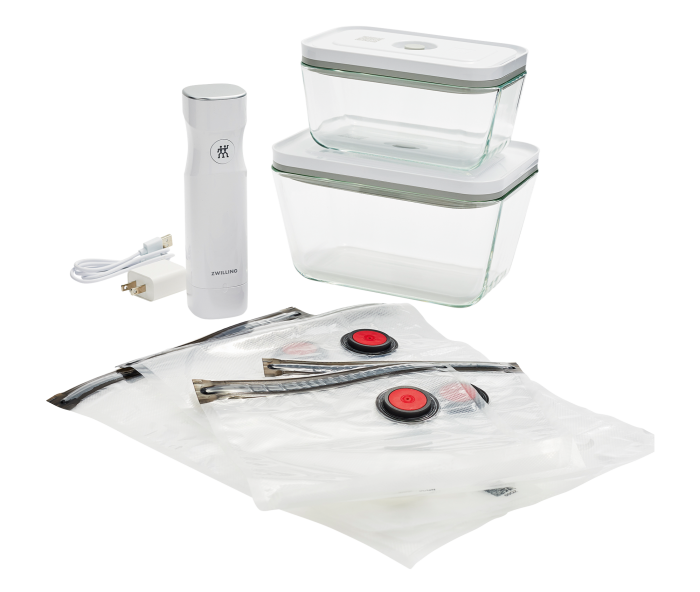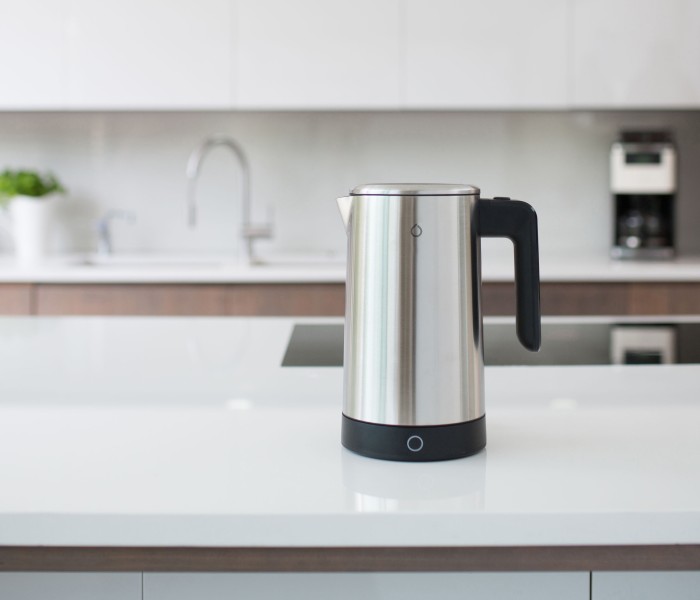Sage Smart Oven Pizzaiolo
“It’s like writing a poem, making a pizza,” said Sophia Loren when interviewed on Desert Island Discs about why she would choose a pizza oven as her desert-island luxury. And having spent some time with a brilliant new pizza oven from Sage, I understand where she’s coming from.
The Pizzaiolo – it means “pizza chef” – is no ordinary domestic pizza-maker. It claims to be the only domestic benchtop oven to replicate the searing 400ºC of a brick oven. It’s also foolproof: even my cack-handed first runs featuring badly made dough and chronic topping overload were delicious, with leopard-spotted, gorgeously charred bases and ingredients ready in two minutes. Despite the Hades-like temperature, they were also fresh and juicy.
The Sage oven is plug and play and sits pertly on a kitchen worktop. It doesn’t just deliver a brute whack of 400ºC, either. Heat is applied to the pizza in three algorithm-coordinated ways. The deck – a circle of cordierite stone – applies conductive heat to the underside of the base. There’s a source of radiant heat directed at the outer ring of the upper crust, and ambient convective heat, focused by parabolic deflectors, to cook the toppings without burning them. Be warned, however. It’s still hellish hot in the Pizzaiolo – there’s no way to keep it from looking burned inside. And you will have pyrotechnic events when a stray bit of mozzarella catches fire. The machine also smokes from around the door seal (it’s meant to), so either use with a good extractor fan on, or open window. £700, sageappliances.com
RAK Hotspot Miner V2
If you are game for exploring the cryptocurrency rabbit hole, you may want to consider a hotspot miner. Our test model has been on a Brooklyn window ledge for three months and has magicked more than $1,000 worth of Helium currency out of thin air.
Here’s how it works… Every “internet of things” device in a public place, from dog-collar trackers to smart bikes, needs a nearby communications network or hotspot to connect to wirelessly. The data these gadgets generate is mostly moved around by established phone networks – the Vodafones and AT&Ts – that charge fees to carry the information.
Which is where Napster’s Shawn Fanning and British gaming entrepreneur Amir Haleem come in. Their Helium startup aims to compete with the traditional providers to carry data from internet-of-things devices on its own network. They sell you a hotspot with some hardware, such as RAK’s hotspot miner, and you take a percentage of any money made by the Helium network in its cryptocurrency.
Quite what the value of a Helium coin will be worth in the long term, who knows, but it’s up and running in more than 3,400 cities across Europe and North America and could be worth a punt. $345, europe.helium.com

Jura Z10 coffee machine
Jura’s new Z10 coffee machine shares all the excellent qualities of earlier Jura machines I have tested, but packs one magnificent new – and unique – feature, which will make this the summer of the iced latte macchiato.
Along with the wide range of hot espresso-based drinks the machine will make, it boasts a patented cold extraction process that speeds up the laboriously slow business of pulsing cold water over coarse coffee grounds at high pressure to make cold espresso.
The smoothness of that first latte macchiato I made with the Z10 was unforgettable, but bear in mind that you need a good supply of ice on hand to make sure it’s perfectly chilled. Also, if you like to play barista at home, I should warn you that Jura’s models are all press-button, so there’s no manual portafilter to clunk into place with a flourish. Right across the range of recipes, however, the Jura coffee is every bit as good as any I’ve tasted from more professional-looking home espresso makers. From £2,145, uk.jura.com

Zwilling vacuum food storage
Move over Tupperware. This system of storing food under vacuum from the 300-year-old brand Zwilling deserves a place in your kitchen even if you already have a surfeit of gadgetry. The starter kit consists of an electronic vacuum pump, two heavy-duty fridge-to-oven containers made of borosilicate glass (ovenproof to 180ºC) and a selection of plastic food bags. The pump sucks air out of the container until it’s all but a vacuum, then turns off.
Zwilling says food stays fresh in the fridge five times longer, and it’s right. I was sent a Sunday roast for two from the London meal-delivery service Love Yourself. It was pretty good, but inexplicably came with a kilo of roast carrots and parsnips – enough for about eight people. After taking a bit every night and resealing the vacuum, the food was still fine a fortnight into the experiment. Case proven. But I shan’t be eating roast carrots or parsnips again until 2023 at the earliest. Zwilling sets, from £80, zwilling.com

SleepHub
As technological sleep aids go, this British machine, SleepHub, made by Cambridge Sleep Sciences is substantial. It looks like a bedroom stereo system, with a central unit and two quite heavyweight speakers that play a low pulsing hum designed to match the waveforms your brain produces during healthy sleep. These vary in frequency and pitch through the night to mimic what the sleeping brain should be registering. The sounds are designed to train your brain into matching them. The hum, which would be distracting, is then masked by ambient sounds of your choosing, from white noise to a running stream to trains.
While it is a little on the elaborate side, a team of neuroscientists and sound technologists has spent 10 years on its development and it seems to work. An insomniac friend who tested it (and hates technology) grudgingly admitted it was “really helpful”. Other users report that their Fitbits and similar sleep trackers record longer and better-quality shut-eye when they are using the device. £399, sleephub.com

Smarter iKettle 3.0
A voice-controlled kettle is not something I expected to fall in love with. But the Smarter iKettle 3.0 is a neat gadget. The app allows you to sync the kettle to switch it on when your alarm goes off in the morning (a 2020s spin on the 1960s Teasmade), as well as set the temperature you want it to heat to (depending on whether you want coffee or different kinds of tea); it will also let you know from afar how full or not the kettle is.
For parents of bottle-feeding babies, there’s Formula Mode, which allows you to set the kettle to boil at a certain time in the night to fit your child’s feeding regime. It will then alert you when it has cooled to the optimum temperature for use. There’s also Home Mode, which uses geopositioning to switch on the kettle when it detects you are minutes away from your front door. The app can be integrated with Alexa, Google Home and Siri, so you can tell the kettle to turn on from your desk. Truly hot technology. £119, smarter.am

Arlo Essential Indoor Camera
I doubt the past 18 months have been a great time for sales of home-security devices. But now that going out – and even away – is back, securing your home should be a re-consideration. I have previously featured Arlo’s webcams, which have an exceptional reputation but can be complex multi-camera installations, with the cameras wired into a dedicated hub. It now has the Arlo Essential Indoor Camera, a simple, one-box security system that connects directly to your WiFi.
It provides most of the functions you would expect on a more expensive camera – 1080p HD video and motion alerts to your phone, night vision, zoom up to 12x, two-way audio communication to really spook intruders – and even more if you buy a small monthly subscription. It also has a physical privacy shield for when you’re at home, which can be slid into position remotely from the phone app.
The system also sends viewable video to your Apple Watch if the camera detects suspicious movement – so you can avoid the gaucherie of getting your phone out in, say, a meeting. £119, arlo.com

https://ift.tt/2TxUGK1
Gadget
Bagikan Berita Ini















0 Response to "Seven gadgets for happy homes - Financial Times"
Post a Comment